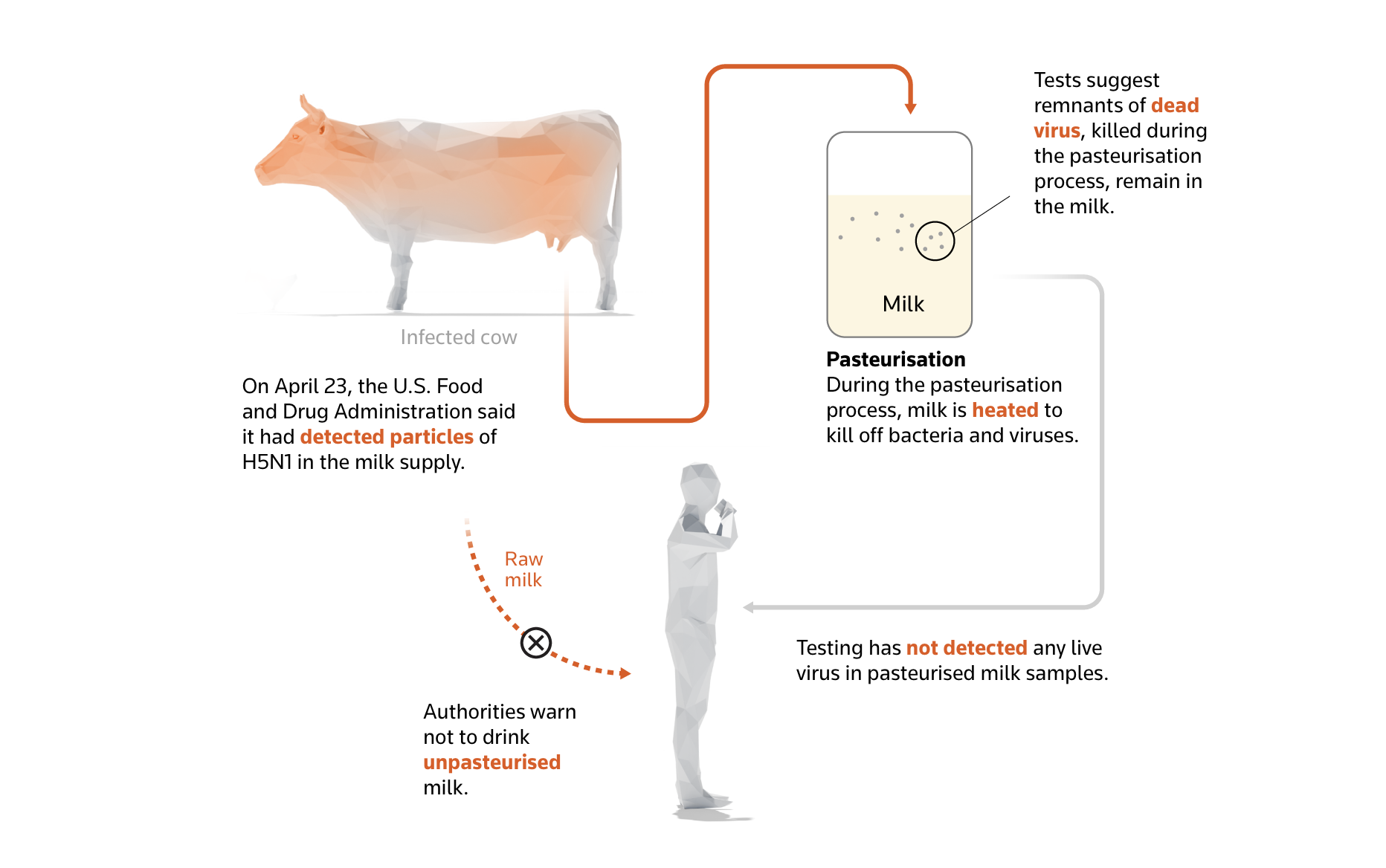



How humans can and can’t catch bird flu - Reuters
Expansion to a new mammal species is concerningScientists are on alert for changes in the H5N1 or bird flu virus that could signal it is adapting to spread among humans. The virus has caused serious, sometimes fatal, infections among people and has long been on the list of viruses with pandemic potential. Any expansion to a new mammal species is concerning.
An outbreak of bird flu among cattle herds in the United States led to the first known case of transmission between a cow and a human, after a Texas farm worker caught the virus. Previously, the virus had mostly been passed to humans through close contact with wild birds or infected poultry.

The spread of bird flu to an increasing number of species and its widening geographic reach have raised the risks of humans being infected by the virus, according to the World Organisation for Animal Health (WOAH).
The infections in cattle are from the same subtype of bird flu that has been infecting wild birds and poultry flocks globally, also killing several mammal species that likely contracted the virus from consuming sick or dead birds.
In February, a deadly type of bird flu was confirmed on the mainland of Antarctica for the first time. Scientists said it created a potential risk for the southern region’s huge penguin colonies.
Since H5N1 arrived in South America in 2022, bird flu had already killed dolphins, some 50,000 seals and sea lions along the coasts, and at least half a million birds, in Chile and Peru.

While bird flu infections in humans are rare, they can be deadly when they happen. According to the World Health Organization (WHO), there have been 889 H5N1 infections in humans from 2003 to 2024. Of those, 463 or 52% resulted in death.

US officials have strengthened measures to contain the further spread of the first known outbreak of H5N1 in dairy cows, which has now spread to herds in nine states and from there into the country’s milk supply.
So far there is evidence of wild bird-to-cow, cow-to-cow, cow-to-poultry, and one case of cow-to-human transmission. There is no evidence of human-to-human transmission.

Because of the heavy viral load in milk and mammary glands, scientists suspect the virus can spread between cattle during the milking process, either through contact with infected equipment or with virus that becomes aerosolised during cleaning procedures.
One in five commercial milk samples tested in a nationwide survey contained particles of the H5N1 virus, according to the FDA. The agency said, though, there is no reason to believe the virus found in milk poses a risk to human health and that pasteurisation effectively killed the virus.

“I’m not worried about the milk itself,” said Samuel Alcaine, associate professor, of food science at Cornell University. “It does indicate that the virus is more widespread among dairies than we had previously thought.”
A World Health Organization official said there was a risk of H5N1 bird flu virus spreading to cows in other countries beyond the United States through migratory birds.



